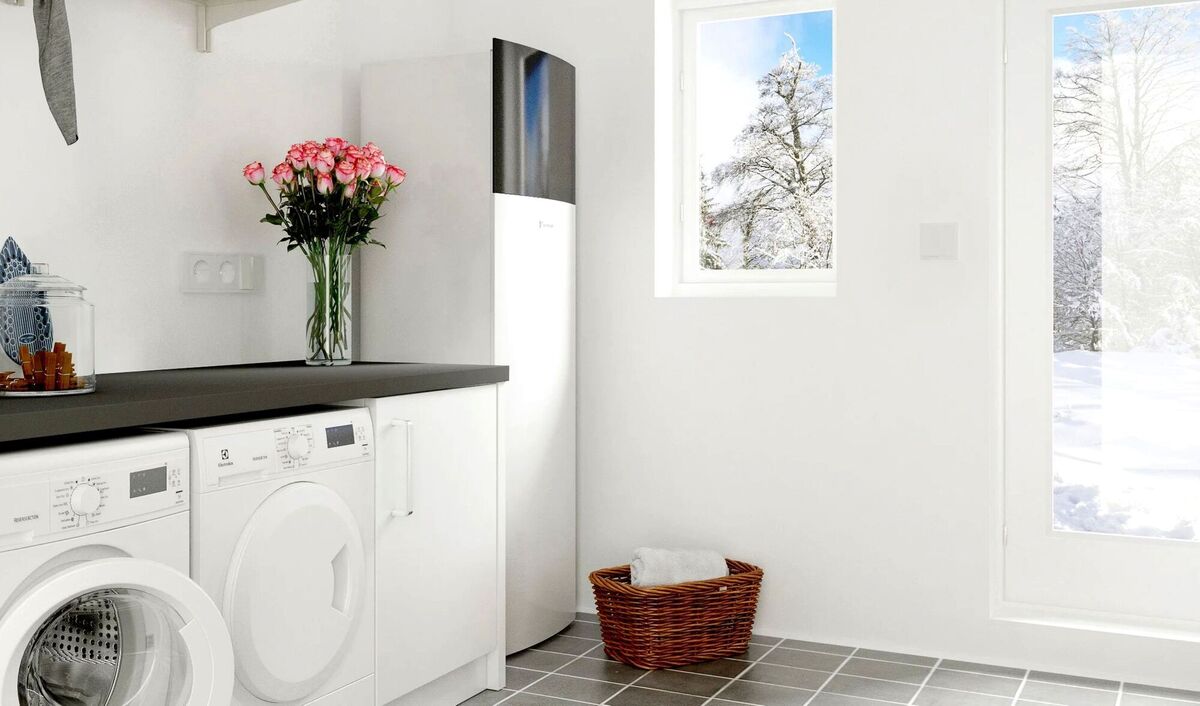Q&A: All you need to know about heat-pump technology

With fossil fuel central heating under attack, could a heat pump future-proof your home? Daiken altherma Monobloc air-source heat pump, Rosstechnical.ie.
Hugh Foley MBA BSc (Eng) is MD at RTS Heating & Cooling Services Ltd, specialist in heating and cooling systems, and long-established provider of energy upgrades, based in Dungarvan.
Hugh explains: The size of the floor area and the age of the property is the starting point. We then ask whether any further energy upgrades were carried out to insulation, windows and doors since the property was built or extended. We investigate the capacities of any other heat sources, and finally, we use our guesstimate of a likely BER rating to size the heat pump for budget purposes.
"If a BER is present we use an SEAI-recommended room heat-loss program (HLI) to calculate the heat pump output. We give a budget and guesstimate and where the property is obviously far off the grant level BER, we tell the client what we think, and the basis for our opinion. Where it is borderline, or obviously ready, we suggest an (SEAI) Technical Assessment.”
Berth Sheehy, is MD at Energywise Ireland, a progressive, sustainable energy company based in Cork, and a registered service provider in the SEAI One-Stop-Shop deep retrofit initiative.
He explains: “The appropriate heat pump capacity is determined based on the heat load calculation and a desired system efficiency. Heat pump capacity is typically measured in kilowatts (kW). This capacity should be sufficient to meet the heating load of the home and takes into account factors like climate, temperature extremes, and the preferences of the homeowner.
"It’s recommended to involve an experienced heating professional who can perform a detailed assessment of the home, review the load calculations, and consider any additional factors specific to the installation site. This will ensure that the heat pump is properly sized and selected for the specific needs of the home, optimising its performance and energy efficiency.”
Hugh Foley of RTS says: “The Daikin Altherma unit we install most regularly, is a 180-litre integrated unit, with dimensions of 600mm (wide) x 625mm (deep) x 1.7m (high), together with some pipework at the top. Visually, this space is taken up to ceiling level (in a kitchen or utility area) or sits in the hot press with some storage above the 1.7m level. That’s the footprint of a washing machine.
"If a standard cylinder is chosen rather than say the Altherma (which is a fridge-freezer lookalike) the space demanded is no more than if you were heating the water via a boiler.” If you have around 1sq m-1.5sq m of dedicated space in a separate plant room, it’s probably suitable for your heat pump components. Talk to your supplier.
Energywise Ireland’s MD, Berth Sheehy responds: “The decision on whether to include a buffer tank with an inverter heat pump should be based on a thorough evaluation of the specific requirements, load profiles, and characteristics of the system.

"The majority of heat pumps we fit do not require one. All our domestic heat pumps have inverter-controlled compressors that can modulate their output based on the heating or cooling demand by adjusting the compressor speed to match the load requirements, without the need for thermal storage in a buffer tank. This can result in improved overall energy efficiency and reduced energy consumption. Buffer tanks typically require additional space for their installation.”
With UFH often an insurmountable expense in a retrofit of a HP-based central heating system, how often are radiators replaced in the retrofit of an ASHP? Can we keep a vented, gravity-fed system?
Hugh Foley of RTS continues: “To date, we have replaced or upgraded radiators' sizes on about 30% of radiators in retrofits as a requirement. A significant number of clients have chosen to replace radiators as a facelift measure (to blend with a more personal aesthetic). In terms of the plumbing, we prefer a pressurised system, however in older properties we suggest leaving open vented since this is less severe on any defects there may be in the older pipework.”
Berth Sheehy adds: “It’s important to note that not all retrofit projects require the replacement of radiators. If the existing radiators are in good condition, appropriately sized, and compatible with the new system, they can often be retained, provided they are functioning efficiently.”
How can we reduce the running costs of any HP in this age of high kW electricity prices?
Hugh Foley continues: “Heat pumps are about keeping up. Fossil-fuelled boilers were sized to catch up. Heat pump-ready properties are capable of holding much of the heat generated, so the HP is sized to replace heat lost most of the time with a capability of heating the house from a cold start.”
Heating from a cold start heat pumps are not as reactive as fossil fuel boilers are they run the water hotter. Hugh adds: “Costs escalate dramatically when a home is allowed to cool and a significant amount of energy is needed to reheat the fabric of the interior until the insulation stops it from transmitting to the outside. At this point, the heat generated is then available to heat the occupant’s space, but the additional cost has gone into reheating the fabric. To prevent this bleed of energy, don’t allow the temperature to drop significantly (from what’s set on the thermostat).”
How important is mechanical ventilation with heat recovery in terms of efficiency and air quality. Can the system be introduced happily without it?
“Generally,” Hugh Foley of RTS advises, “If one seals a building well, utilising insulation, modern window and door installation techniques, and all-natural draughts are eliminated, this will reduce the air exchange rate. This results in a rise in relative humidity and respiration products present. The humidity will result in condensation on any cold surfaces and a stuffiness in the dwelling which is also associated with low oxygen content in the air. Mechanical ventilation, either heat recovery ventilation (HRV) or demand-controlled ventilation is therefore vital in these circumstances.”
“The HP is powered up but does not run or use any material amounts of power unless there is a demand from a time clock, thermostat or schedule,” Hugh explains. “It’s ON, like a TV on standby, but using negligible amounts of power. There is a misguided belief that the unit is always ON rather than just resting, awaiting a run signal. A heat pump-ready dwelling retains heat even in summer. Homeowners, enjoying this comfortable environment, sometimes conclude that the retained heat is because the HP is not idling but running.”
Noise, breezes onto patios created by the unit etc.? Does position influence performance?
It’s a good idea to site the fan of your HP system away from your favourite seating area for the summer, but in terms of noise, they are relatively quiet — generally operating in the 40dB to 50dB range. Berth Sheehy of Energywise adds: “Heat pumps, like any mechanical equipment, produce some level of noise during operation.
"Avoid installing the heat pump in a location close to occupied areas, such as bedrooms or living spaces. The longevity and performance of a heat pump can be influenced by environmental factors, including the presence of a direct breeze.
"They rely on air as the medium for heat exchange, and airflow is crucial for their efficient operation. However, if a strong breeze consistently blows directly onto the heat pump, it can disrupt the heat transfer process and potentially affect the performance and lifespan of the unit. Therefore, it's advisable to consider the prevailing wind patterns and choose a location that minimises the direct impact of strong or continuous breezes on the heat pump.”











